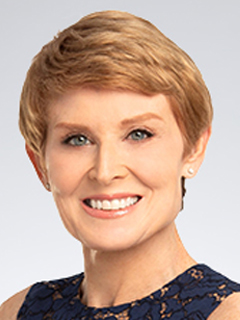March jobs surprise to the upside
We have yet to see the full effects of layoffs at the federal level.

April 4, 2025
Payroll employment rose by 228,000 jobs in March after downward revisions of 48,000 for the previous two months. The three-month moving average slowed to 152,000 in March, down from 184,000 in February.
Public sector payrolls added 19,000 jobs in March, while the drop in February was revised away. Gains in state and local government hires offset a small decline in federal employment. Many federal workers who were furloughed were ordered back to work by a judge in March, although there were delays in reinstating many employees. We have yet to see the full effects of layoffs at the federal level.
Private sector payrolls rose by 209,000 jobs, after a downward revision to 116,000 in February. Gains were driven by a 78,000 increase in healthcare and social assistance. Healthcare accounted for 54,000 of those gains. The remainder were in social assistance, which includes everything from childcare to in-home eldercare.
Leisure and hospitality rebounded by 43,000 with the bulk of the increases in food services, which took a beating during the first two months of the year. Unusually harsh winter weather limited mobility in January and February, while travel picked up during Spring Break.
Retail added 23,700 jobs with gains concentrated in grocery stores. Vehicle dealerships added 3,800 jobs as consumers scrambled to buy vehicles ahead of tariffs. Vehicle sales surged to 17.8 million units in March, the highest since April 2021. Department stores and big-box discounters shed jobs during the month.
Transportation and warehousing added 22,900 new jobs, the strongest gains since December. The gains were heavily concentrated among couriers and messengers.
Construction added 13,000 jobs. The gains were concentrated in specialty nonresidential. Builders are in the crosshairs of tariffs and changes to immigration policy. Material costs were rising ahead of tariffs as firms rushed to stockpile tariffed items; this is crimping builder margins.
Manufacturing was roughly unchanged. This is a time of year when manufacturers tend to ramp up, especially in the vehicle sector. That makes for hard comparisons after seasonal adjustment. Producers started to announce production cuts in the wake of tariff announcements. Those are not likely to show up in full until May, and only if tariffs stick.
Average hourly earnings rose 0.3% and slowed to a 3.8% year-on-year gain, a tick lower than the pace of February. Average hours worked were unchanged 34.2, slightly below the pace of February 2020. Average weekly earnings rose 0.3% but were only up 3.2% from year ago. That is the slowest pace of weekly earnings gains since January 2024. This explains much of the discontent consumers are showing.
Separately, the unemployment rate rose to 4.2% due in part to a slight rebound in labor force participation. The ranks of the unemployed edged up. The prime-age participation rate fell, driven by a drop in women’s participation. The gains showed up among 20–24 year-olds, followed by teens and those aged 55 to 64 years old.
The underemployment rate, which includes discouraged workers and those forced to accept part- instead of full-time jobs for economic reasons, edged down to 7.9% in March after jumping in February.
The number of multiple job holders rose to 9.13 million, a new record. The share of multiple job holders is now above the levels we saw pre-pandemic. Millennials are dominating those gains, as more full-time job holders are now supplementing their incomes with part-time work.
The number of those out on vacation during the month hit 2.3 million, which was the lowest for March since the pandemic. A late Easter likely contributed.
The ranks out due to childcare problems reached the second highest level for March on record and remained near record highs. The total of those out sick finally receded, with a winding down of a unusually wicked cold and flu season.
We saw gains among those out due to other family and personal obligations. Those figures include caring for sick children and those doing unpaid eldercare for family members.
March will likely be the high-water mark for the year.

Diane Swonk
KPMG Chief Economist
Bottom Line
Payroll employment pleasantly surprised to the upside in March, albeit following downward revisions to January and February. The momentum in employment has slowed since the start of the year. March will likely be the high water mark for the year, given layoff announcements in the federal government, their spillover effects and the expected impact of tariffs. Tariffs have already prompted some firms to idle production. We still expect the Federal Reserve to hold off on rate cuts until late in the year due to the stagflation triggered by tariffs, unless something breaks in the financial markets.
Subscribe to insights from KPMG Economics
KPMG Economics distributes a wide selection of insight and analysis to help businesses make informed decisions.
Explore more

Jobs data reveal reasons for consumer concern
Job gains slowed markedly as we entered 2025.

KPMG Economics
A source for unbiased economic intelligence to help improve strategic decision-making.

Climbing a wall of worry: Navigating uncertainty amidst an erosion of trust
Meet our team
